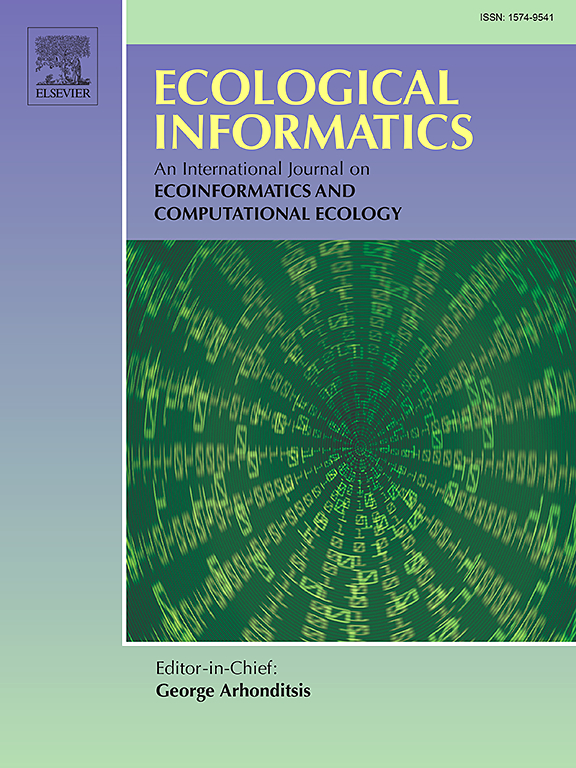Understanding the ecological impacts of vertical urban growth in mountainous regions
IF 5.8
2区 环境科学与生态学
Q1 ECOLOGY
引用次数: 0
Abstract
Approximately 35 % of Chinese cities are situated in mountainous areas, where rapid urban expansion on slopes has led to the degradation of urban ecosystem health, marked by the loss of natural landscapes, diminished resilience, and reduced ecosystem services. However, the impact of vertical urban growth on ecosystem health, especially in terms of temporal dynamics, distribution, and underlying mechanisms, remains poorly understood. Chongqing, a typical mountainous metropolis, was selected to investigate these impacts over the past two decades. By integrating the slope spectrum (SS), climbing index (CI) of built-up land, and ecosystem health index (EHI), we explored how urban expansion has affected the EHI. Additionally, we developed a method for identifying the expansion advantage slope range (EASR), which can track dynamic slope-climbing urban expansion. Our findings revealed that the built-up land expansion in Chongqing was primarily concentrated in the central areas of the western region. From 2000 to 2010, this expansion occurred primarily in urban built-up areas and shifted to other built-up areas between 2010 and 2020. Although the Climbing Index was −0.11, the EASR results indicated an increasingly significant slope-climbing trend, with slopes of built-up land increasing from [1.17, 8.25] to [1.42, 8.48]. Notably, when expansion occurs on slopes exceeding 12°, the decline in the EHI becomes significantly more pronounced, with the impact coefficient rising from 0.201 to 0.447. This study reveals the fundamental relationship between slope-climbing urban expansion and ecosystems, providing valuable insights for urban planning and sustainable development in mountainous regions.
了解山区垂直城市发展的生态影响
中国约35%的城市位于山区,在这些地区,城市在斜坡上的快速扩张导致了城市生态系统健康的退化,其特征是自然景观的丧失、恢复力的减弱和生态系统服务的减少。然而,城市垂直增长对生态系统健康的影响,特别是在时间动态、分布和潜在机制方面,仍然知之甚少。以典型的山地大都市重庆为研究对象,对其近二十年的影响进行了研究。通过对建设用地坡度谱(SS)、爬坡指数(CI)和生态系统健康指数(EHI)的综合分析,探讨城市扩张对生态系统健康指数的影响。此外,我们还建立了一种识别扩张优势坡度范围(EASR)的方法,该方法可以跟踪动态爬坡城市扩张。结果表明,重庆市建成区扩张主要集中在西部中部地区。2000 - 2010年,这种扩张主要发生在城市建成区,2010 - 2020年,这种扩张向其他建成区转移。虽然爬坡指数为- 0.11,但EASR结果显示爬坡趋势越来越明显,建设用地的坡度从[1.17,8.25]增加到[1.42,8.48]。值得注意的是,当膨胀发生在超过12°的斜坡上时,EHI的下降更加明显,影响系数从0.201上升到0.447。该研究揭示了爬坡城市扩张与生态系统之间的基本关系,为山区城市规划和可持续发展提供了有价值的见解。
本文章由计算机程序翻译,如有差异,请以英文原文为准。
求助全文
约1分钟内获得全文
求助全文
来源期刊

Ecological Informatics
环境科学-生态学
CiteScore
8.30
自引率
11.80%
发文量
346
审稿时长
46 days
期刊介绍:
The journal Ecological Informatics is devoted to the publication of high quality, peer-reviewed articles on all aspects of computational ecology, data science and biogeography. The scope of the journal takes into account the data-intensive nature of ecology, the growing capacity of information technology to access, harness and leverage complex data as well as the critical need for informing sustainable management in view of global environmental and climate change.
The nature of the journal is interdisciplinary at the crossover between ecology and informatics. It focuses on novel concepts and techniques for image- and genome-based monitoring and interpretation, sensor- and multimedia-based data acquisition, internet-based data archiving and sharing, data assimilation, modelling and prediction of ecological data.
 求助内容:
求助内容: 应助结果提醒方式:
应助结果提醒方式:


